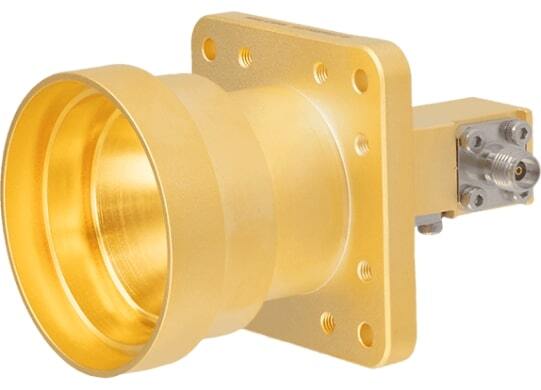Antennas are available in multiple sizes, shapes, and forms in the market. A horn antenna is a type of directional antenna that helps to boost directivity. This antenna is made by using a metallic material to bring electromagnetic waves in a single direction.
This antenna gives better impedance matching and reduces power loss. This blog explains horn antennas, their features, benefits, applications, and so on.
About Horn Antenna
The horn antenna was developed for the first time with the help of some experiments by Jagdish Chandra Bose in the year 1897. The latest horn antenna was discovered separately in the year 1938 by G. C. Southworth and Wilmer Barrow. Experts did research to explain the radiation pattern, design, and structure of the antenna.
Normally, the horn antennas are popular in the areas of waveguide transmission and microwave. They are also known as microwave antennas.
A horn antenna is an aperture antenna that is developed for microwave frequencies. This antenna has a wide horn-shaped end. It provides a larger directivity because of its unique structure. They operate in microwave frequencies between the ranges of 300 MHz and 30 GHz. You can use a horn antenna like a feed horn for large antennas such as directive antennas and parabolic antennas.
Design and Structure of a Horn Antenna
This antenna contains a horn-shaped bottom. It helps to receive and transmit RF microwave signals. Apart from that, horn antenna is also used with waveguide feeds and direct radio waves in a narrow beam.
The flared portion in a horn antenna can be of any shape such as conical, rectangular, or square. It should be of minimum size for proper working. The antenna with a large wavelength and small horn size cannot work effectively.
In horn antennas, a small amount of incident energy is radiated from the waveguide’s entry. The rest of the energy is reflected back to the same entry because of the open entry. Horn antennas are of 3 types such as:
- Sectoral antenna
- Pyramidal horn antenna
- Conical horn antenna and Bi-conical antenna
Now, let us discuss these 3 antennas in detail:
- Sectoral Antenna
Sectoral antenna contains flaring in one direction only. It is further divided into two types namely sectoral E-plane antenna and sectoral H-plane horn antenna. In sectoral E-plane horn antenna, the flaring goes parallel to the E-plane. In the sectoral H-plane horn antenna, the flaring goes parallel to the H-plane.
- Pyramidal Horn Antenna
The next type of high-gain horn Antenna is a Pyramidal horn antenna. It has flaring in both E-plane and H-plane directions.
- Conical Antenna
As the name says, the conical antenna has a shape like that of a cone. The flaring and the waveguide are in cylindrical shape.
- Bi-conical Antenna
This antenna contains 2 conical antennas combined together.
Where is the Horn Antenna Used?
Horn antennas are used in several applications such as:
- You can use a horn antenna for microwave application and satellite communication.
- Horn antennas are normally used as a feed horn in dish antennas to get the proper reflected waves.
- Horn antennas can be easily used for short-range RADAR.
- These antennas work in UHF and super-high frequency ranges.
Major Benefits of Using Horn Antennas in Communication
Horn antennas come in various types and shapes. Every type of antenna is used for a specific purpose. Some of the best advantages of using horn antennas are:
- These antennas do not contain resonant elements like other antennas. They can operate on a wider bandwidth and frequency range.
- Horn antennas have a simple design and they can be easily used by anyone without technical guidance.
- You can easily get a ratio of 20:1 in a horn antenna as it has a beamwidth of 10:1 ratio.
- It is very simple to connect the horn antennas to the coaxial feeder and waveguide.
- Due to less standing wave ratio, the horn antenna can decrease standing waves easily.
- You can use horn antennas in the form of feed horns in large parabolic antennas.
- Horn antennas give a stable performance on every frequency range.
- You can get multiple types of horn antennas in the market such as Directional Antenna and Circular Polarized Horn Antenna for the different tasks.
Conclusion
Horn antennas are widely used in many astronomical studies and microwave applications. If you want the best-quality horn antenna, find the High gain Horn Antenna manufacturer online from Google and other search engines. You can visit the official websites of Horn Antenna Supplier to get the best quality products at an affordable range.
Many manufacturers and suppliers sell horn antennas in various sizes and shapes according to the needs and budgets of the customers. They provide various benefits to the customers like easy return and replacement policy and speedy delivery of the products.

